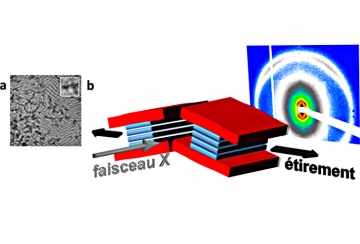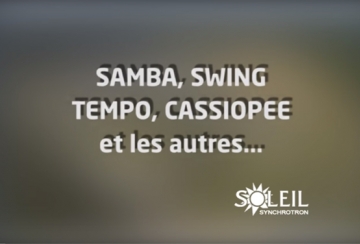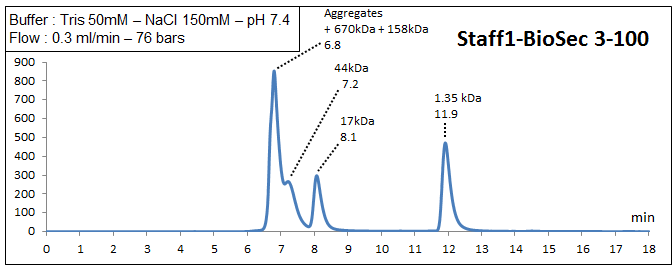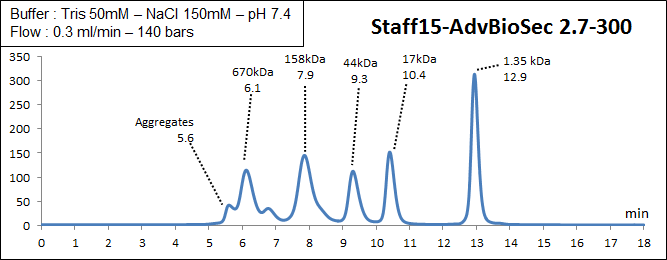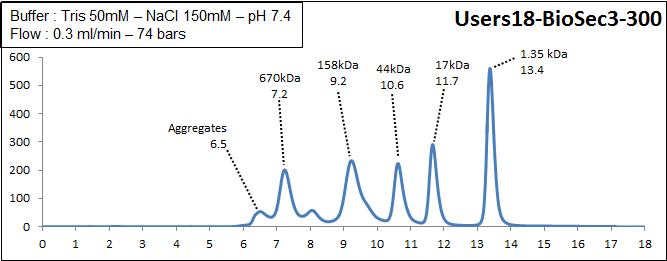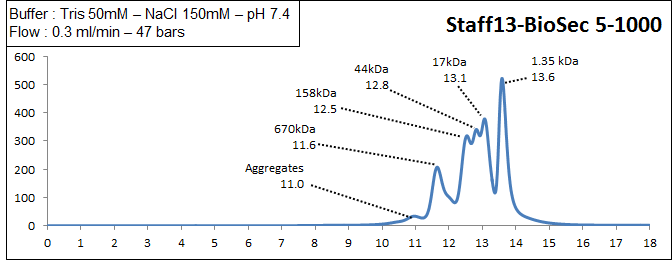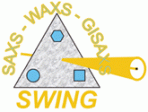
SWING, Small and Wide angle X-ray scattering
For studying complex structure samples: macomolecules, nanomaterials, soft matter, tissues....
Website under construction... please be patient
By providing information on the structure of matter at scales varying between nanometer and micrometer, the beamline SWING will help answering the numerous questions related to soft condensed matter, conformation of macro-molecules in solution and composite materials in material sciences.
Our experimental set up allows small-angle X-ray scattering (SAXS) and wide-angle X-ray scattering measurements (WAXS) to be performed simultaneously in the 5-16 keV energy range, as well as grazing incidence small angle scattering (GISAXS). Anomalous scattering experiments will be facilitated. Emphasis will be put on the variety of samples that can be studied, solutions, gels, amorphous solids, crystallised solids and the corresponding diversity of sample environments.
Team
Our last tweets
Technical data
Between ~5 and 16 keV
~2 eV
In-vacuum U20 undulator.
Source Size (sigma, μm): 388 (H) x 8.1 (V)
Source Divergence (sigma, μrad): 14.5 (H) x 4.6 (V)
Diaphragm at 11.7 m (1x0.5 mm2)
Fixed exit DCM Si111at 20 m
Fixed incidence focusing KB at 22.5 m
Sample position : 30 - 32 m
Detector / Sample Distance : 0.5 – 6.5 m
see Set-up environments
Between 20x20µm2 (zone plate) to 450x20 μm2 FWHM in the experimental hutch
1.1013ph/s @7keV, 1.1012 ph/s @16keV (with 500 mA ring)
SAXS:
- Eiger 4M (Dectris)
- PCCD170170 (AVIEX), Gain > 3ADU/ph, Noise≈2ADU
WAXS:
- Hybrid Pixel detector (Detector Group pool)
Under primary vacuum, SAXS detector positions :
- 0.20 / + 0. 20 m (horiz), -0.20 / +0.20 (vert), 0.5 m / +6 m (along X-rays).
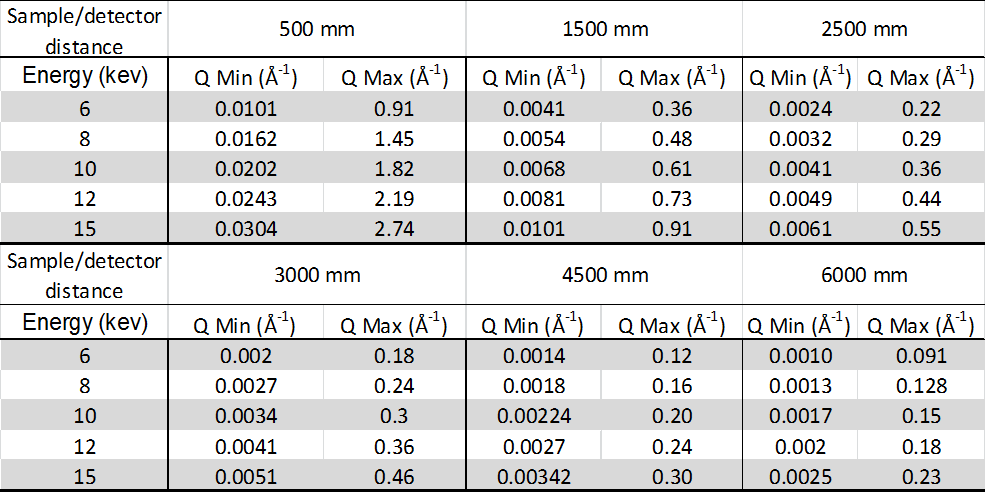
Dedicated sample environments have been developed to provide scientific communities with optimized experimental conditions. For soft-condensed matter, numerous devices are available (home-made capillaries holders, Linkam THMS600, Anton Paar rheometer with custom-made Couette cells …). For structural biology, a unique SEC-SAXS HPLC system is routinely used for online purification connected to a quartz capillary placed under vacuum cell. Here are presented the most used devices for both soft-condensed matter and structural biology.
HPLC: SEC-SAXS
 |
|
AutoSampler for BioSaxs
 |
|
High Pressure
description will arrive soon
Static Capillaries Holder
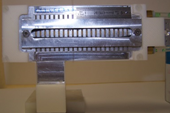 |
|
Circulation Capillaries Holder
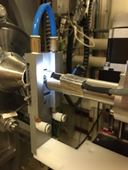 |
Circulation through the capillaries can be done using various setups :
|
Gel Holder
description will arrive soon
Mixing and pipetting cell
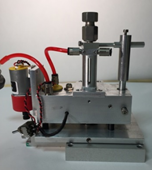 |
The sample is drawn in the capillary only and at the required height. After X-ray exposition, it’s reinjected into the mixing cell. |
Linkam
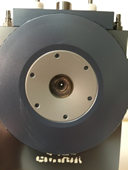 |
|
Traction Cell
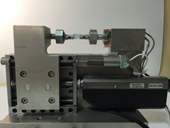 |
|
Rheometer
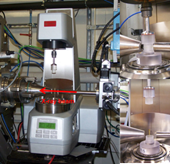 |
Rheometer Anton Paar MCR 501
|
Stop-Flow (+MALS)
description will arrive soon
Micro-fluidic
description will arrive soon
BioSaxs
Before Coming
What you have to bring
We use Agilent standards vials and inserts for the HPLC device and the Auto Sampler. We lend you the vials and the caps but you have to buy you own inserts (Agilent reference: 5181-1270). In any case, we can give some used inserts that you can wash and dry.
The minimum quantity of buffer is 40ml for one injection (10mL of system purge + 20 mL of column equilibration + 10mL of elution). We will recommande you to bring much more (100mL to 500mL) to obtain a better equilibration of the column and to induce less stress in case of trouble.
To make your backups directly on the line, a Windows compatible hard disk is required. However, you can still download all your data a posteriori via the sunset[Experiment Data][Soleil Data Retrivial].
What we can lend you
The biology laboratory (link) provides support to users for the preparation of their experiments. For any question, please ask the laboratory staff.
We recommend you to bring your own analytical columns for SEC-SAXS. We have also a wide selection of column for users. All these columns have been calibrated:
|
BioSec3-100 Column Volume:5mL Mass Range: 0.1 to 100kDa pH Range: 2-8.5 |
|
|
AdvBioSec 2.7-300 Column Volume:5mL Mass Range: 5 to 1250kDa pH Range: 2-8.5 |
|
|
BioSec3-300 Column Volume:5mL Mass Range: 5 to 1250kDa pH Range: 2-8.5 |
|
|
BioSec 5-1000 Column Volume:5mL Mass Range: 50 to 7500kDa pH Range: 2-8.5 |
|
|
BioSec 5-2000 Column Volume:5mL Mass Range: >10000kDa pH Range: 2-8.5 |
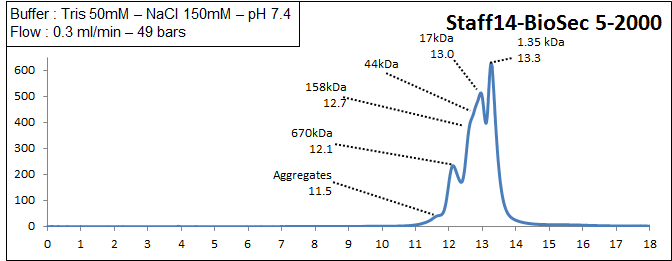 |
During your session
The session includes beamline set up installation. It’s recommended to discuss with your local contact before coming to the beamline to save time during installation.
Running experiments
Our GUI (passerelle) allows automatic data collections of multiples simple in a row. For direct data monitoring and security check, an others GUI (Cook) is installed.
The local contact will show you how to use these GUI.
Data Processing and analysis: Foxtrot & AutoBioSAXS
All the images produced on the Swing beamline can be process by homemade software (Foxtrot) in collaboration with Xenocs. You can ask for it by email to Xenocs by mail.
You can find here (new link) a tutorial for processing SEC-SAXS experiments.
For SEC-SAXS and BioSaxs AutoSampler, an automatic workflow for data analysis is available. This workflow takes raw images as input files and sends all results curves into IspyB database. Furthermore all intermediates files are available for users and could be reloading in our Foxtrot application.
Living area
We have a living area where you can use coffee machine, Sofa, fridge for food and beverages, micro wave and table. Wifi is available using your sunset login and password or using Eduroam network.
This area is sample free and please clean it after your session.
After your session
Please don’t forget to fill the end of report in the sunset webpage.
All your datas are available using the Soleil data Retrieval via the sunset web page.
ChemSaxs
During your session
The session includes beamline set up installation. It’s recommended to discuss with your local contact before coming to the beamline to save time during installation.
Running experiments
Our GUI (passerelle) allows an “on demand” complex data collections strategies. For most of the sample environment, a workflow is already written. For direct data monitoring and security check, an others GUI (Cook) is installed. The local contact will show you how to use these GUI.
Data Processing and analysis: Foxtrot & AutoChemSAXS
All the images produced on the Swing beamline can be process by homemade software in collaboration with Xenocs. You can ask for it by email to Xenocs (link).
Living area
We have a living area where you have coffee machine, Sofa, fridge for food and beverages, micro wave and table. Wifi is available using your sunset login and password or using Eduroam network.
This area is sample free and please cleans it after your session.
After your session
Please don’t forget to fill the end of report in the sunset webpage.
All your datas are available using the Soleil data Retrieval via the sunset web page.
work in progress
work in progress
Downloads
Foxtrot
Denfert
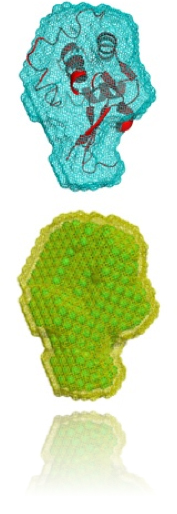 Denfert Software (Ab initio shape determination, including hydration layer)
Denfert Software (Ab initio shape determination, including hydration layer)
version 2.0 (June 2015)
Denfert : F.A.Q.
A zip archive containing executables for Mac, Linux and Windows together with a test example may be downloaded by clicking here.
... a program for the ab initio “dummy-atom” structural modeling of Biological Macromolecules including the contribution of their inherent hydration layer.
Developed by Alexandros Koutsioubas and Javier Pérez
If you use DENFERT, please cite :
A. Koutsioubas & J. Pérez, Journal of Applied Crystallography (2013) 46, 1884 and A. Koutsioubas, S. Jaksch & J.Pérez, J. (2016). J. Appl. Cryst. 49 (doi:10.1107/S1600576716003393)
Brief Description
DENFERT is implementing a simulated annealing algorithm similar to DAMMIN program by D. Svergun (Biophys. J. 76, 2879-2886) for the restoration of low-resolution structural info of bio-molecules from SAXS and SANS data. The major advantage of DENFERT is that the hydration layer around bio-molecules is taken into account by introducing a second type of beads (hydration beads) in the model.
In the top figure, we see an example of the shape restoration of Lysozyme from SAXS data using DENFERT. A cartoon representation of the crystallographic structure is also presented for comparison. The bottom figure depicts additionally the hydration layer around the reconstructed protein shape

